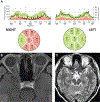Optic Neuritis
- PMID: 31584536
- PMCID: PMC7395663
- DOI: 10.1212/CON.0000000000000768
Optic Neuritis
Abstract
Purpose of review: This article discusses the clinical presentation, evaluation, and management of the patient with optic neuritis. Initial emphasis is placed on clinical history, examination, diagnostic testing, and medical decision making, while subsequent focus is placed on examining specific inflammatory optic neuropathies. Clinical clues, examination findings, neuroimaging, and laboratory testing that differentiate autoimmune, granulomatous, demyelinating, infectious, and paraneoplastic causes of optic neuritis are assessed, and current treatments are evaluated.
Recent findings: Advances in technology and immunology have enhanced our understanding of the pathologies driving inflammatory optic nerve injury. Clinicians are now able to interrogate optic nerve structure and function during inflammatory injury, rapidly identify disease-relevant autoimmune targets, and deliver timely therapeutics to improve visual outcomes.
Summary: Optic neuritis is a common clinical manifestation of central nervous system inflammation. Depending on the etiology, visual prognosis and the risk for recurrent injury may vary. Rapid and accurate diagnosis of optic neuritis may be critical for limiting vision loss, future neurologic disability, and organ damage. This article will aid neurologists in formulating a systematic approach to patients with optic neuritis.
Figures









References
-
- The clinical profile of optic neuritis. Experience of the Optic Neuritis Treatment Trial. Optic Neuritis Study Group. Arch Ophthalmol 1991; 109(12):1673–1678. - PubMed
Publication types
MeSH terms
Grants and funding
LinkOut - more resources
Full Text Sources
Research Materials
